Every woman’s delivery story is life-changing. Childbirth is grueling, transformative, and wildly miraculous. But giving birth via cesarean? It’s its own humbling experience. Days before lockdown, my son was born. Following an early morning induction and complications later that day, I had an emergency cesarean. In the days, weeks, and months that followed, I couldn’t have anticipated how mentally—and physically—challenging my recovery would be. And so today, I’m sharing holistic tips for cesarean healing. As a Nutrition Consultant with a specialty in postpartum health, I’m armed with natural remedies for C-section recovery. If you recently gave birth via C-section, or you anticipate birthing this way, these tips will hopefully speed up your recovery time. Congratulations, mama!
Disclaimer: This article is for informational purposes only. It is not, nor is it intended to be, a substitute for professional medical advice, diagnosis, or treatment and we recommend that you always consult with your healthcare provider.
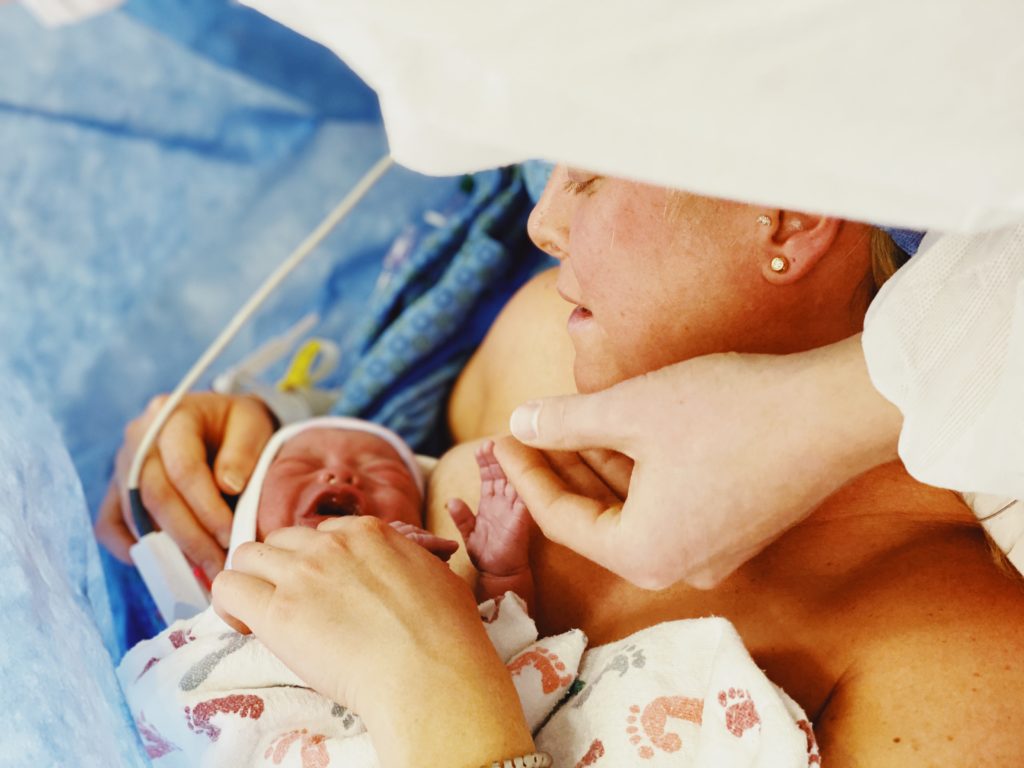
Cesarean awareness month
No matter how your baby’s birth unfolded, I hope you feel gratitude for your body’s strength and courage. Even if your delivery was far from what you envisioned, every childbirth is a remarkable and powerful phenomenon. In honor of Cesarean Awareness Month, now is the time to help reduce preventable cesareans through education, support, and encouraging vaginal birth after cesarean (also known as VBAC). Interestingly, data from 2007 shows that in the U.S., the cesarean section rate was about 32%. For every three births, one was by C-section, compared to about 5%, (or 1 in 20), during the mid 1960’s. This number is continuing to rise (in the U.S.). All of that to say, Cesarean Awareness Month is about empowering women to avoid unnecessary surgery—if there is no medical reason to have one. More on this topic, here.
Postpartum healing
If you’ve recently returned home from the hospital, I hope you’re taking the time to cherish the hard, tender, and beautiful early weeks as new mom. Lean on your loved ones and don’t hesitate to ask for help—particularly if you delivered via C-section. You just had major, major surgery. Not only is your body recovering from pregnancy, and possibly a long labor, but there’s also an incision through the tissues of your abdomen. There’s likely an emotional dimension to work through—and possibly, trauma. Know that you’re not alone in this. Recovery is essential, as is seeking help. For general tips, see here for my postpartum essentials.
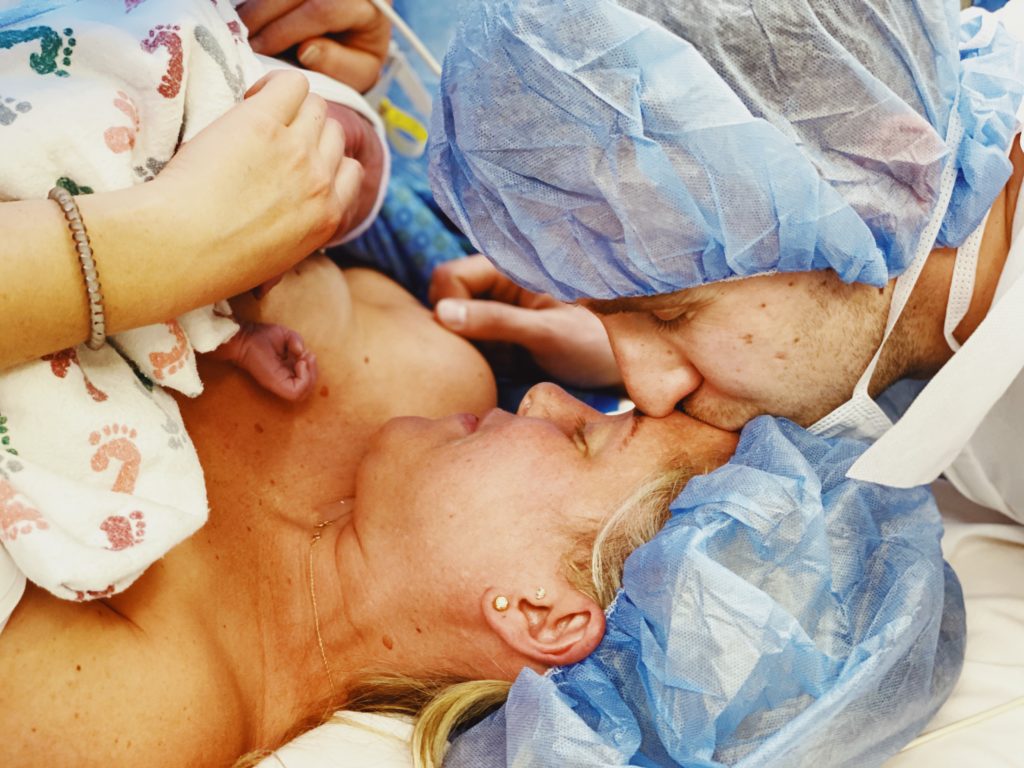
10 cesarean tips to help you heal
First and foremost, healing from a cesarean is multidimensional. Not only do you want to consider your immediate condition, but you want to think about your long-term wellness, too—physical, emotional, psychological, sexual, and more. Below are 10 natural remedies for C-section recovery.
Rest, rest, rest
Once in recovery, you need a lot of rest. This may seem impossible with a newborn baby, but you need to prioritize healing your body. It takes about 6-8 weeks to recover from a C-section, but each woman’s timeline will be different. During this time, it’s recommended that you avoid lifting anything heavier than your baby.

emphasize Nutrition
Deeply nourishing food is one of the most important parts of postpartum recovery. Nutrient-dense foods promote healing after birth, necessary energy, support the production of breast milk, and help rebalance hormones. I have a lengthy article on postpartum nutrition, but here’s the gist: you want to focus on foods that are warm, soft, and easily digestible. Most traditional cultures advise new mothers to eat especially slow, put a heavy emphasis on nutrient-dense bone broths and healing herbs, and strictly prohibit cold foods. And don’t forget to keep taking your prenatal! Here’s a simple guide to put together well-balanced meals:
- A source of protein—animal or plant-based
- Healthy fats—ghee, olive oil, coconut oil, avocado, nut butter, etc.
- Starchy carbs—berries, rice, sweet potatoes, etc.
- Non-starchy carbs—greens, mushrooms, cabbage, tomatoes, etc.
Hydrate
No surprise here. First and foremost, proper hydration is necessary for breast milk production. Plus, drinking water can help you replenish the fluids that you lost during delivery. But it can also help relieve constipation. Aim to drink 8-10 cups of water per day. You can leave bottles and mason jars filled with electrolyte water around the house. You can also sip on homemade fruit and vegetable smoothies (made with water or coconut water) as the liquid base.
eat Nourishing Foods
Specifically, these are anti-inflammatory and nourishing foods to eat during C-section recovery:
Fermented foods: Aid digestion, nourish breast milk, and help rebuild the microbiome (due to antibiotics).
Bone broth: Slow-simmered bone broth plays a key role in the postpartum practices of many traditional cultures. My go-to bone broth is Kettle & Fire. It’s extremely nutrient-dense, high-quality, and tastes delicious. They also make a turmeric ginger broth!
Nut butter: Highs and lows (due to hormonal fluctuations and fatigue) are very common. Monounsaturated fats—the majority of fat found in nuts—help combat these fluctuations by steadying blood sugar. A quick spoonful of nut butter can be a savior in the early postpartum days. I love Santa Cruz Organic peanut butter and Costco’s organic almond butter.
Sardines: Sardines are a rich source of many important nutrients that new mothers require, such as DHA, calcium, and vitamin D3. They are also available canned, which makes them a quick and easy addition to a meal.
Coconut: Nourishes breast milk and helps balance blood sugar.
Winter squash and root veggies: These comfort foods are easy to roast and they keep well in the fridge. Pair them with a healthy fat to help keep blood sugar stable and increase the absorption of nutrients like beta-carotene.
Chia seeds: High in fiber to aid digestion, protein to balance energy, and a good source of calcium, which is especially important for breastfeeding mothers. Chia seed pudding is fast to make for busy mothers.
Grass-fed liver: Rich in iron to replete losses from birth. Rich in vitamin A to support the immune system and promote repair of the mucous membranes in the vaginal canal or skin healing of an incision. I prefer this as an easy-to-take supplement!
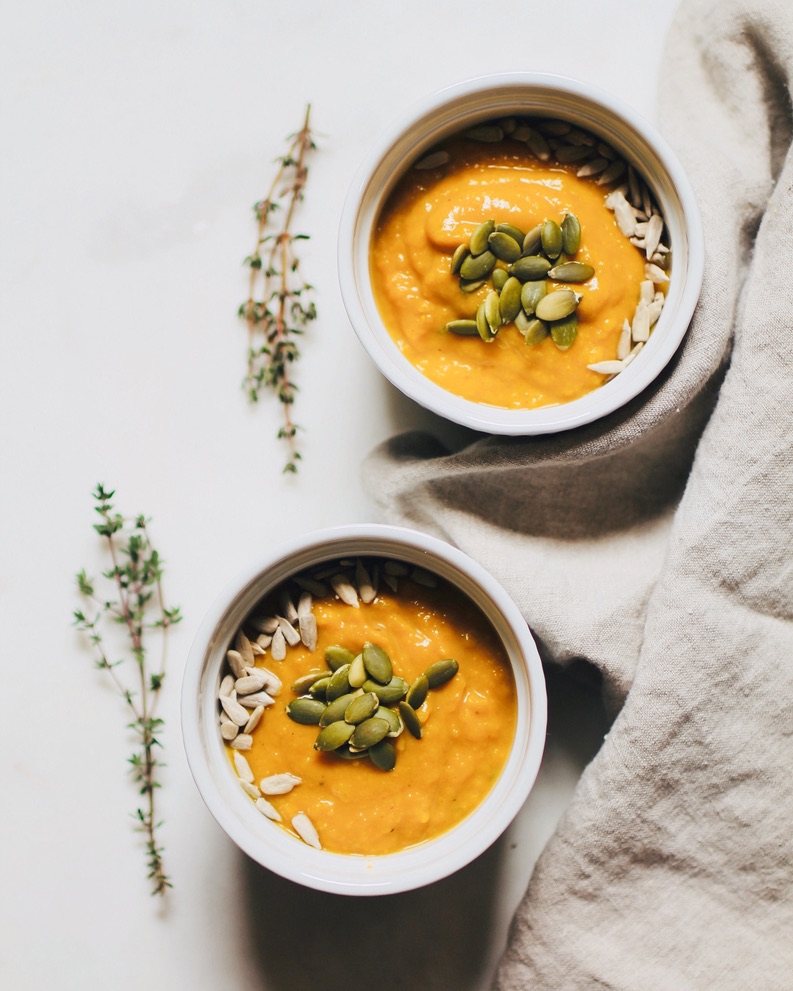
Support digestion
If you had a cesarean, both you and your baby were likely hit with a load of antibiotics. These unfortunately wipe the gut of helpful bacteria that are essential for digestion. Couple that with medications from surgery and opiate pain-relief, and you’ve got a recipe for painful bloating, constipation, and more. When it comes to natural remedies for C-section recovery, focus on:
Cooked vegetables: A big, raw salad may seem like the epitome of a healthy meal, but if your digestion is compromised (normal during the fourth trimester), that salad is akin to throwing wet logs on a weak fire. The saying goes “you are what you eat,” but in reality, you are what you assimilate—breakdown and absorb. When digestion is weak, it’s best to consume cooked and fermented vegetables.
Fermented foods: Fermented veggies, like raw sauerkraut or kimchi, have probiotics that will help stabilize your microflora.
Digestive enzymes: A digestive enzyme is worth exploring if your doctor or healthcare practitioner is onboard.
Probiotic: Ideally, you’ll want start taking a high-quality probiotic as soon as possible. This will also help prevent yeast overgrowth that manifests as the breastfeeding challenge known as thrush. Not to mention, one study found that taking probiotics after giving birth also helped prevent postpartum depression and anxiety.

Build Blood
Our bodies make almost a gallon of blood in pregnancy—a function of which is to provide a buffer against blood loss. But, in a cesarean birth, we tend to lose more blood than average, which means that our bodies have to build it back up. If someone was already borderline anemic, this blood loss could feel significant. We need adequate blood to make milk. Interestingly, low iron can be one of the reasons why there is a delay in milk coming in! When iron is low, we also generally feel unwell. Eat iron-rich foods (and try to limit iron-fortified foods, like cereals, as the iron is synthetic and often difficult to digest). As far as supplements are concerned, this is my favorite iron supplement.
fuel up on fiber
Fiber is key during any stage of life, but particularly during postpartum. Along with proper hydration, fiber is essential for bowel regularity, satiety (fiber helps keep us full), blood sugar balance, and gut health. Top sources of fiber for postpartum: chia seeds, ground flaxseeds, lentils, artichokes, black beans, sunflower seeds, avocado, berries, cooked collard greens, butternut squash, and quinoa.
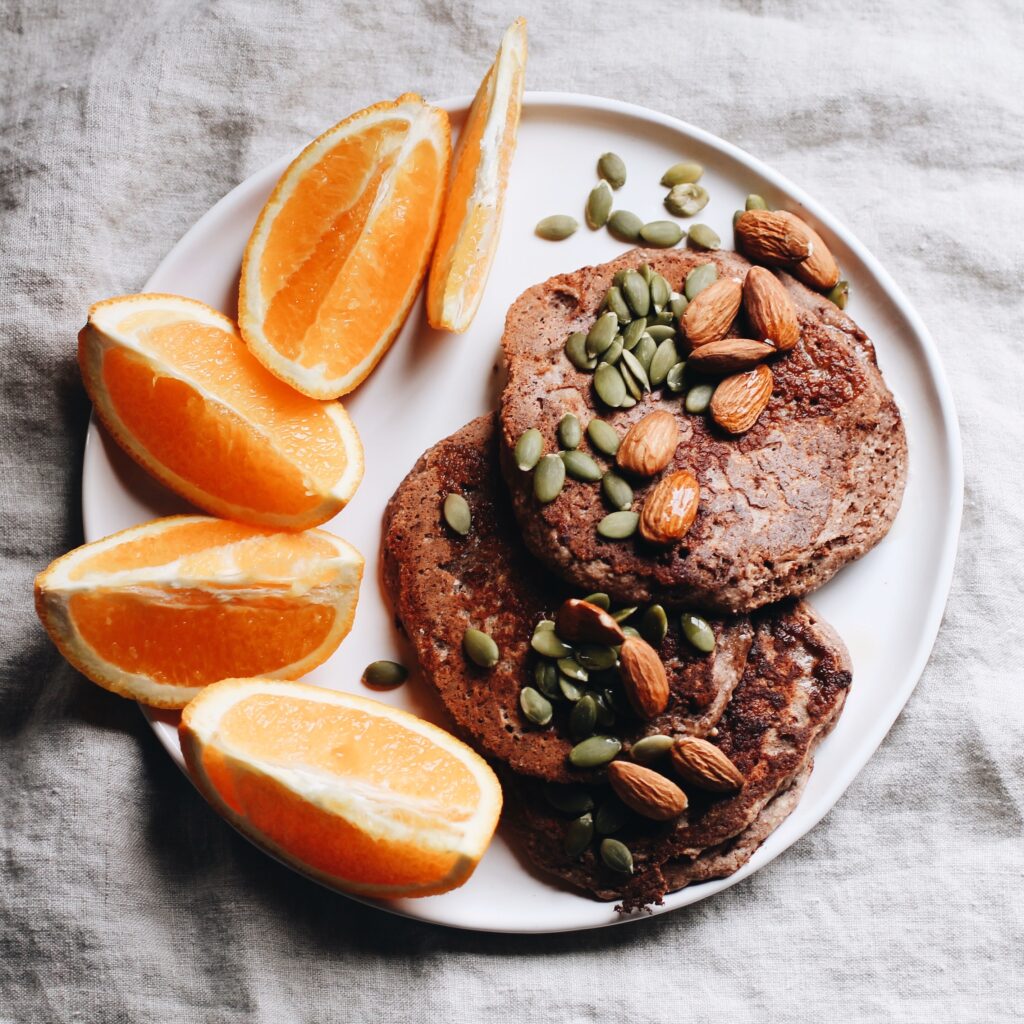
Crank the heat
Pain is inevitable after a C-section. While there’s no getting around it, heat is one way to ease it. Heat will relax your muscles and increase blood flow to the incision. You can apply heat with a hot water bottle, heating pad, or by taking a soak in a warm herbal bath—of course make sure the water isn’t too hot and get the green light from your healthcare provider. Once you’re cleared, add a chamomile or lavender soak to your bathwater for additional benefits.
Massage your scar
Massages have long been used to prevent and reduce the appearance of C-section scars. They increase circulation, bringing fresh blood and nutrients to the suture site. They may also encourage skin regeneration and break up scar tissue—though there is no strong evidence to support this yet. Therefore, chat with your provider first. You’ll want to wait to massage the suture site until your provider tells you it’s safe. Here’s a helpful video to learn how to massage your scar.
seek Support
It goes without saying, but any mother needs support—particularly during the newborn stage. During recovery, if you’re not able to get up and change a diaper or hold your baby comfortably (because of pressure on the incision), you need extra support. Vocalize your needs to your partner, consider a postpartum doula, schedule helpful friends to come by, and if possible, have family around to help. Enlist your community to bring nourishing foods! Natural remedies for C-section recovery include finding a supportive medium for processing your experience, like therapy.
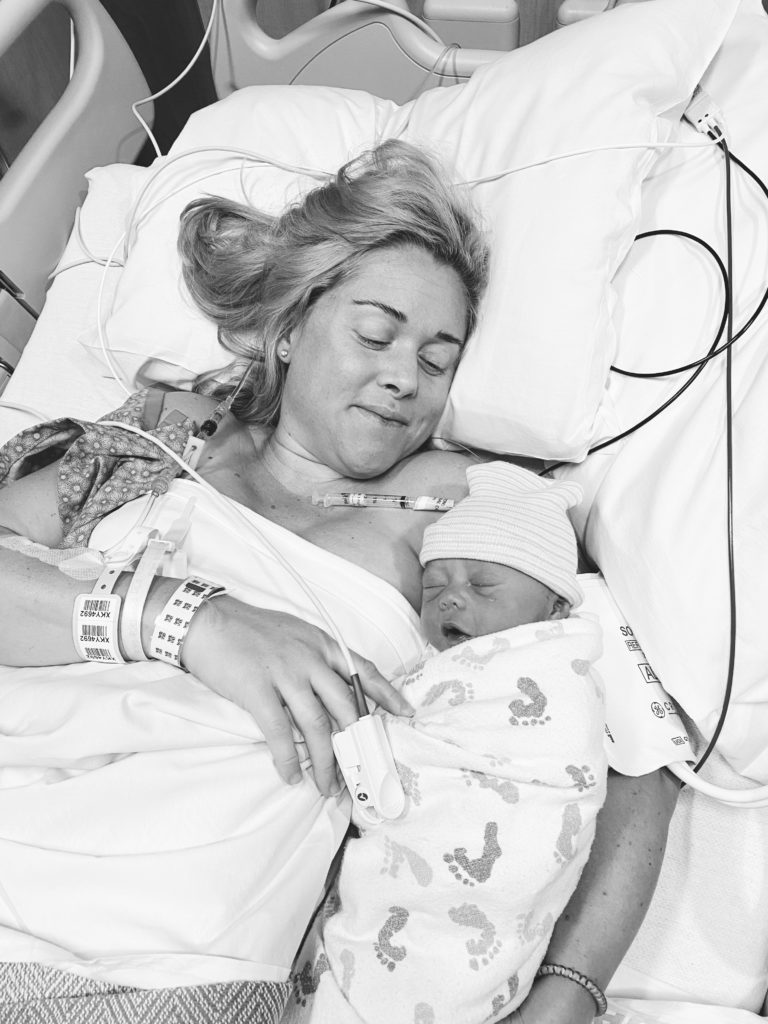
I hope these natural remedies for C-section recovery are helpful!
This post contains affiliate links. Thank you for supporting Wellness with Edie!
This article is for informational purposes only. It is not, nor is it intended to be, a substitute for professional medical advice, diagnosis, or treatment and we recommend that you always consult with your healthcare provider, particularly before starting a supplement protocol during postpartum.



Leave a Reply